Yellowstone National Park is the most famous national park in the United States. It is known for its vast size, and its extreme diversity makes it one of the most popular tourist destinations. However, there’s much more to Yellowstone than meets the eye. So, keep reading to discover some of the most incredible facts about Yellowstone National Park!
1. First National Park in the United States
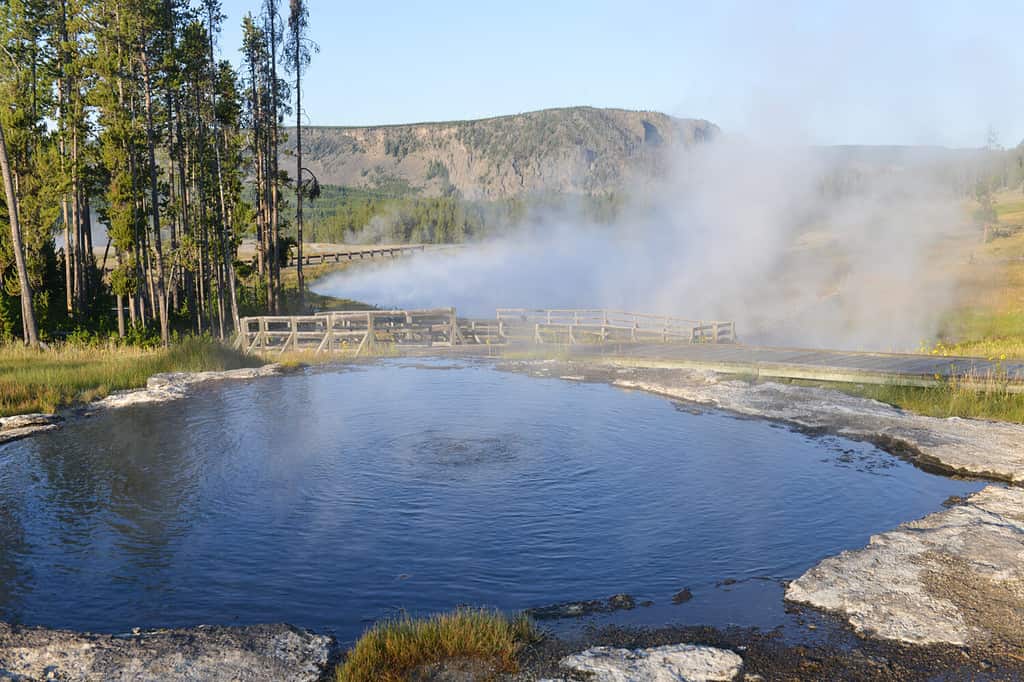
Yellowstone is the oldest national park in the United States.
©Orhan Cam/Shutterstock.com
Yellowstone National Park was established in 1872, officially becoming the first national park in the United States. It is also often considered to be the very first national park in the world, although there is some debate around the fact. In the late 1770s, Bogd Khan Mountain in Mongolia was declared a protected area by the Mongolian government. However, although the area is now officially a national park, some argue that, as it was not initially designated as such at the time, it can’t hold the title of the first national park in the world, leaving the spot open for Yellowstone.
2. It’s Bigger Than Delaware and Rhode Island Combined

Yellowstone has an area larger than Delaware and Rhode Island combined.
©YegoroV/Shutterstock.com
Yellowstone is a vast swath of protected land, spanning some 3,472 square miles. Incredibly, this actually means that it is larger than the combined area of Delaware and Rhode Island. Yellowstone crosses three states — Wyoming, Idaho, and Montana. The vast majority of the park is in Wyoming (96%), with Montana and Idaho having 3% and 1% respectively.
3. Located on an Active Volcano
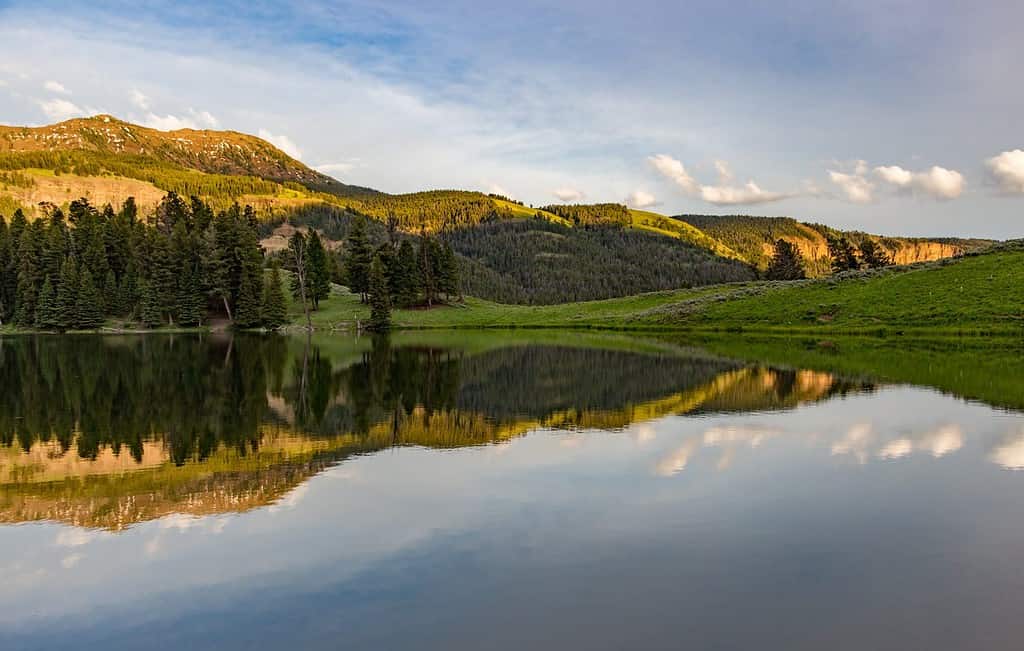
Yellowstone National Park is a massive volcano with enough power to cause catastrophic consequences.
©Martina Sliger/Shutterstock.com
One of the most incredible things about Yellowstone National Park is that it is actually an active volcano. Within the park is a huge caldera which is 30 miles wide and 45 miles long. Known as the Yellowstone Caldera, it is actually considered to be a massive supervolcano. It’s called a supervolcano because of its extreme size, which means that it has the potential for any eruption to have catastrophic consequences for both the climate and the ecosystem.
Yellowstone has had three massive eruptions in history which caused the formation of the caldera. The earliest and most violent eruption occurred 2.1 million years ago, with a slightly smaller one occurring 1.3 million years ago. The most recent super eruption was 640,000 years ago. There have been several smaller eruptions since, the most recent of which was 70,000 years ago. Although this may make it seem as though the volcano is extinct, the area is actually in a volcanic hotspot, and beneath Yellowstone is a massive magma chamber which is estimated to be 37 miles long.
4. There’s Thousands of Hydrothermal Features
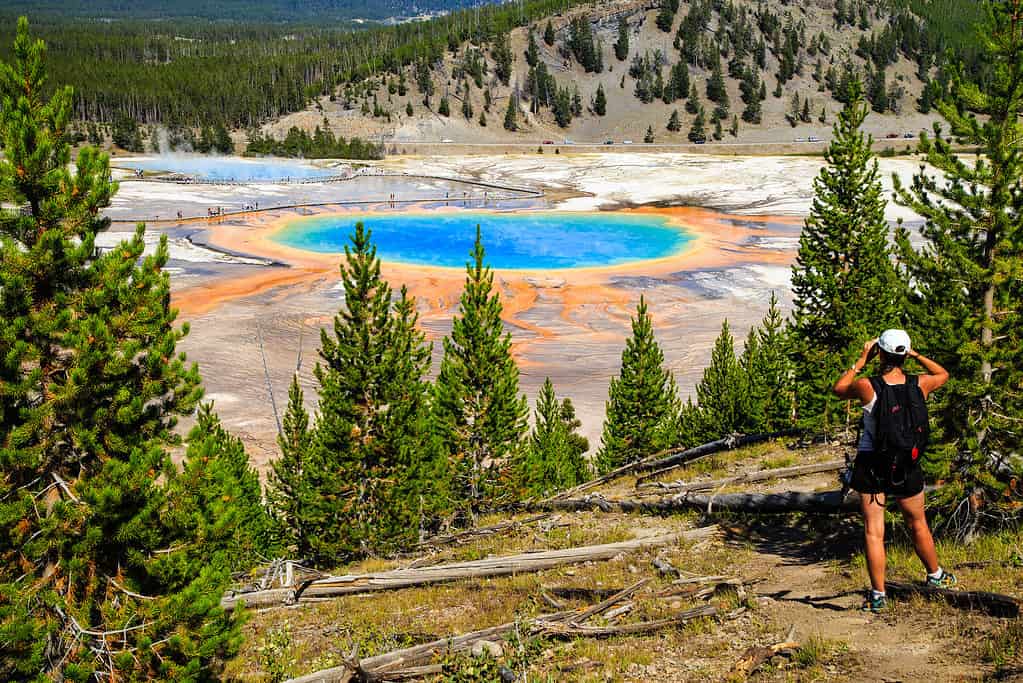
Yellowstone National Park has many beautiful hydrothermal features.
©Edward Fielding/Shutterstock.com
Yellowstone features a vast number of hydrothermal features. Hydrothermal features include things such as hot springs, geysers, fumaroles, and mud pots. In total, there are more than 10,000 of these features, which can be found right across the park. Many of the hot springs and mud pots are brightly colored due to the thermophiles that they contain. Thermophiles are micro-organisms that grow in areas with extremely high temperatures. Different thermophiles live at different temperatures and produce different colors, hence the variation of vibrant colors in the hydrothermal features.
5. Contains Half of the World’s Geysers
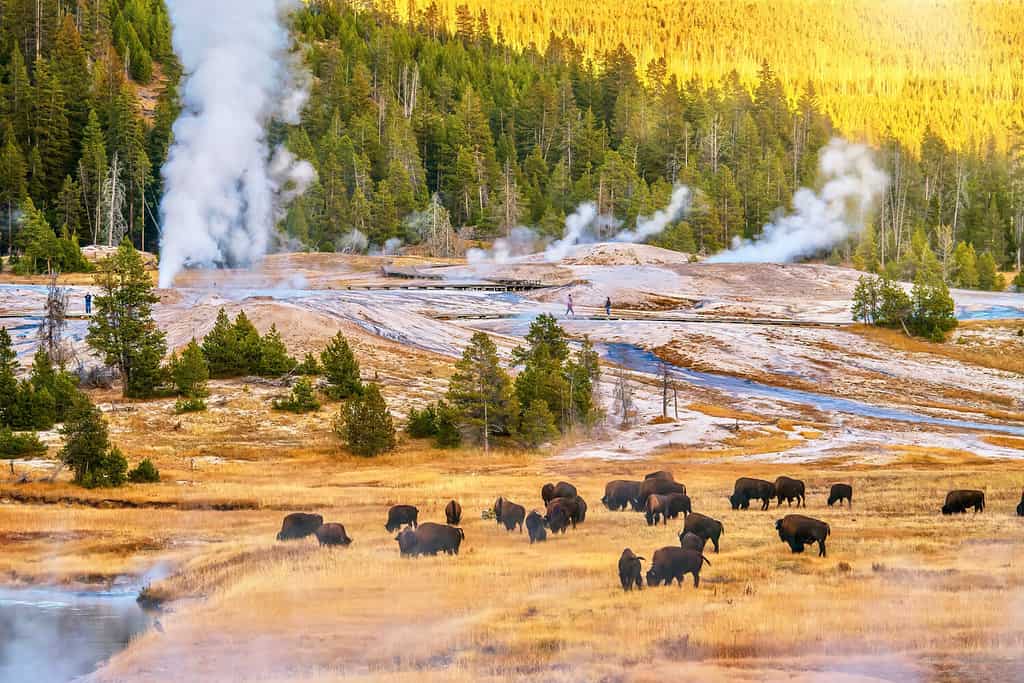
There are around 500 geysers in Yellowstone.
©CherylRamalho/Shutterstock.com
As well as all of the other hydrothermal features that we’ve just mentioned, there are actually more than 500 geysers in Yellowstone National Park. Incredibly, this is around half of the geysers in the entire world!
6. Largest Hot Spring in the United States
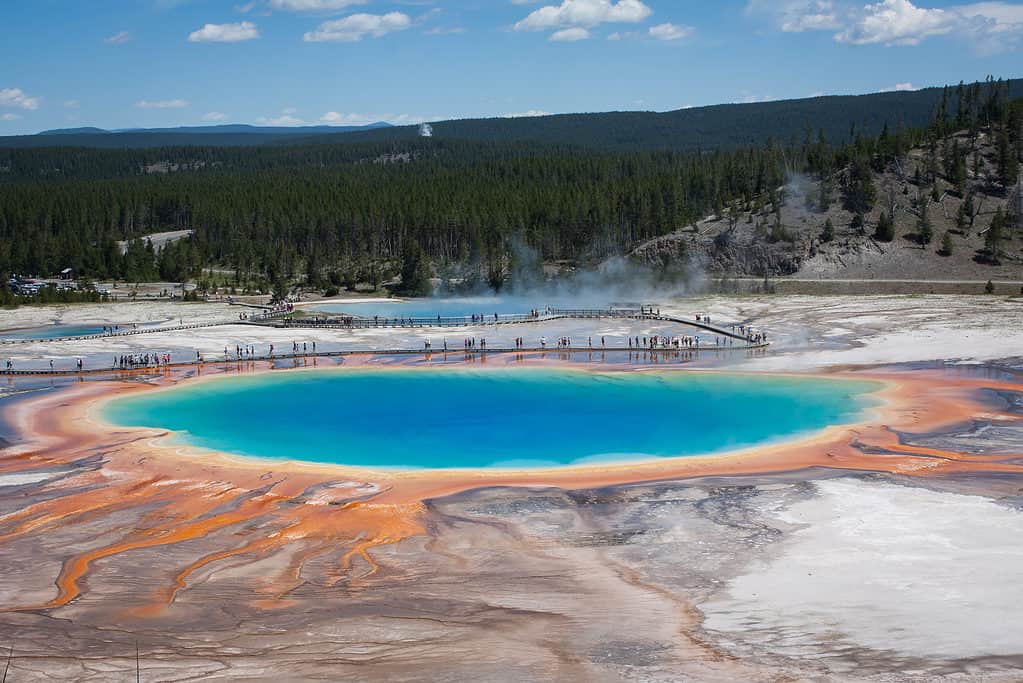
The colorful Grand Prismatic Spring is 370 feet wide.
©Busara/Shutterstock.com
Another incredible fact about Yellowstone National Park is that it also features the largest hot spring in the United States. Grand Prismatic Spring is approximately 370 feet wide and 160 feet deep, which also makes it the third-largest hot spring in the world. It is situated in the Midway Geyser Basin and was first recorded in 1839 by fur trappers. Like many of the other hydrothermal features in Yellowstone, Grand Prismatic features a stunning array of colors around the edge. However, the center is known for its striking blue appearance.
7. Thousands of Archaeological Sites

Artifacts from archaeological sites in the park show evidence of human inhabitation 11,500 years ago.
©iStock.com/gorodenkoff
Yellowstone is one of the ultimate places when it comes to archaeology, as it features around 2,000 different archaeological sites. Amazingly, only 3% of the national park has been explored so far. Numerous artifacts have been excavated from areas across Yellowstone, including items such as arrowheads, spears, and pottery. Based on the archaeological evidence that has been found, it has been determined that humans lived in the area up to 11,500 years ago.
8. One Geyser Erupts Every 90 Minutes

On average, Old Faithful geyser erupts every 90 minutes.
©iStock.com/BigshotD3
The most famous of Yellowstone’s geysers is undoubtedly Old Faithful, which erupts regularly with an average interval of 90 minutes. The geyser ejects boiling water to a height of between 106 and 184 feet, and each eruption lasts between 90 seconds and five minutes. Old Faithful is located in the Upper Geyser Basin and is considered to be so predictable because it is not connected to any of the other nearby hydrothermal features. Surprisingly, the geyser was once used for doing laundry. Clothes were placed on it in the interval and after they were ejected they came out completely clean! Old Faithful is now a popular tourist attraction in the park, with visitors being able to stand a safe distance away and observe the eruptions.
9. Yellowstone Gets a Lot of Earthquakes
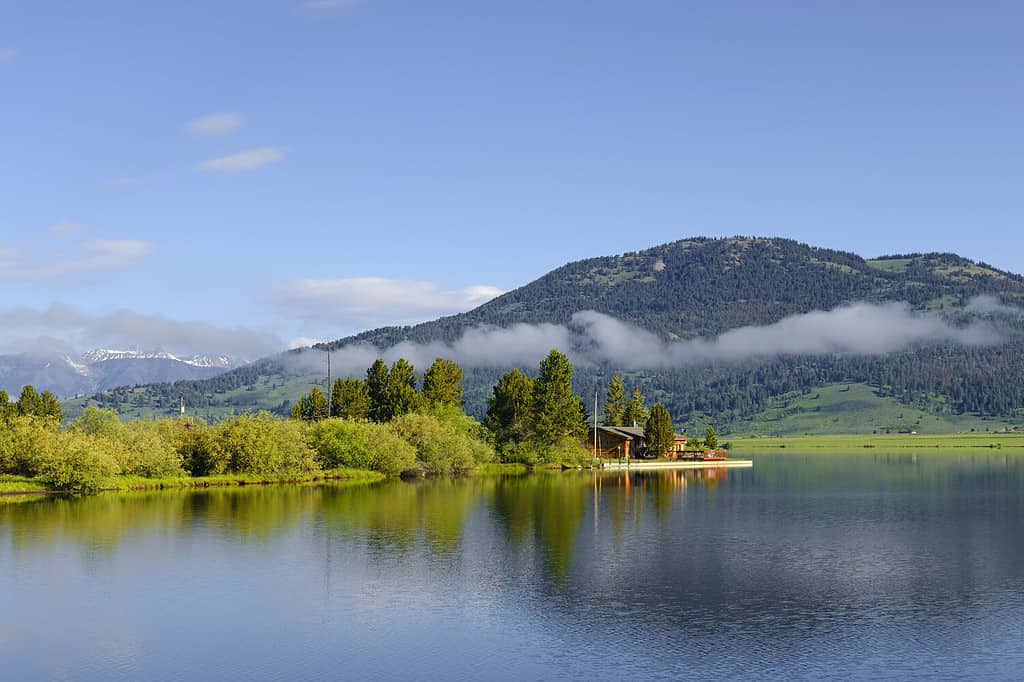
Hebgen Lake was the site of the most powerful earthquake felt in Yellowstone.
©Pecold/Shutterstock.com
Incredibly, Yellowstone is one of the most active areas in the country when it comes to seismic activity. The park experiences between 1,500 and 2,000 earthquakes annually, with 2023 recording 1,600 of them. The most powerful earthquake in Yellowstone had a magnitude of 6.1 and occurred close to the Norris Geyser Basin. However, the largest earthquake ever felt in Yellowstone was the 7.3-magnitude Hebgen Lake earthquake which occurred just outside the park’s border.
10. It’s Home to Thousands of Species
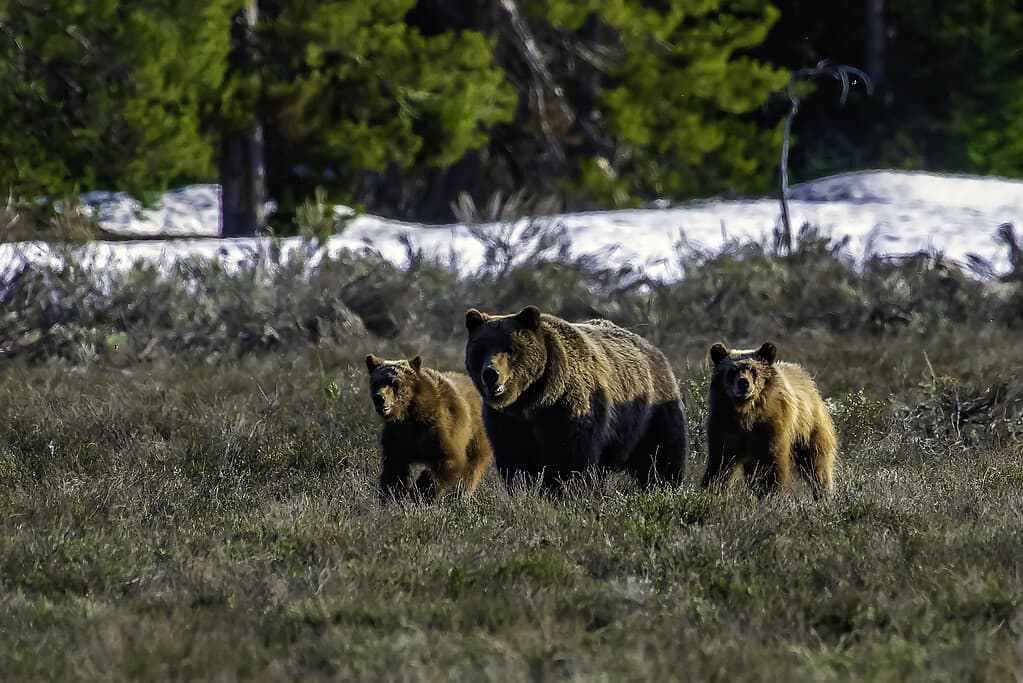
Grizzly bears are just one of 67 species of mammals in Yellowstone National Park.
©John Morrison/iStock / Getty Images Plus via Getty Images
Considering the massive area that Yellowstone National Park spans, this last fact probably isn’t the most surprising. However, with 67 different species of mammals alone, it’s actually the biggest group of animals within the contiguous United States. But that’s not all, as the park is also home to around 300 species of birds and more than 1,300 species of plants. Many of the species within Yellowstone are considered to be endangered, including grizzly bears, gray wolves, and whooping cranes.
The photo featured at the top of this post is © Gjeterhund Photography/Shutterstock.com
Thank you for reading! Have some feedback for us? Contact the AZ Animals editorial team.






